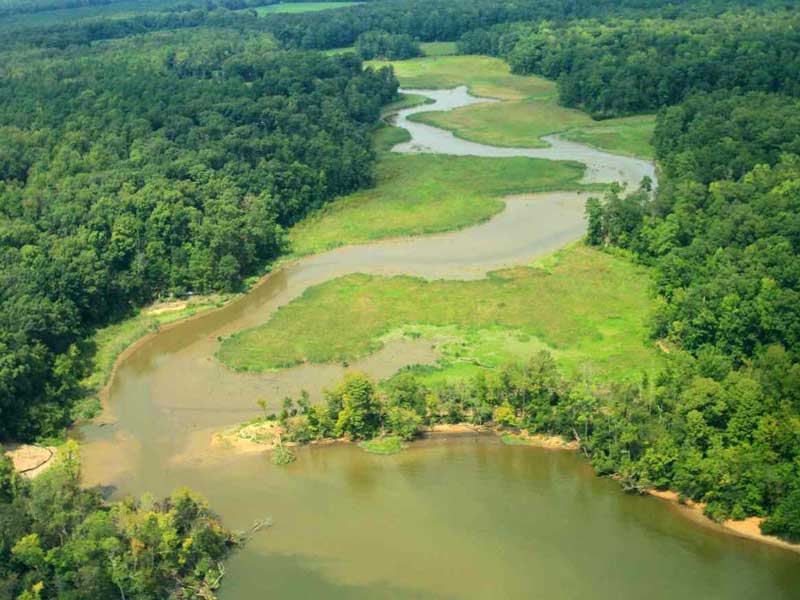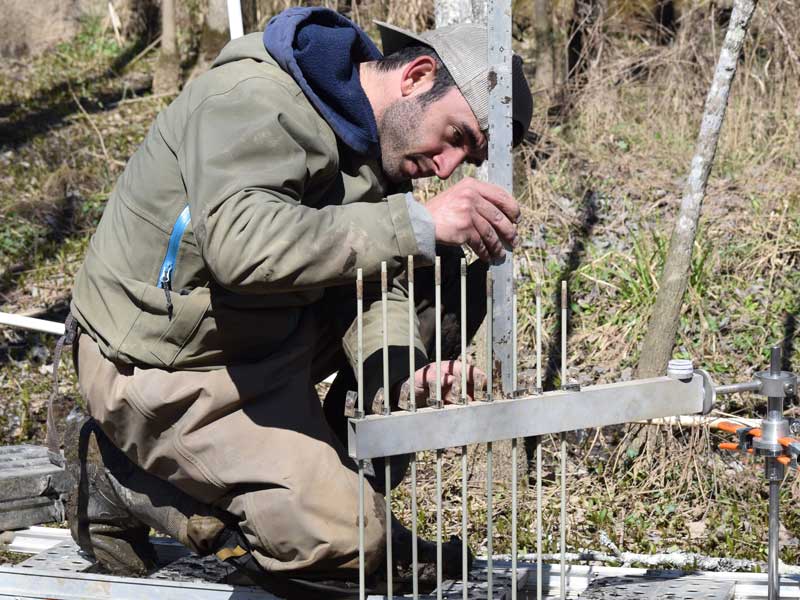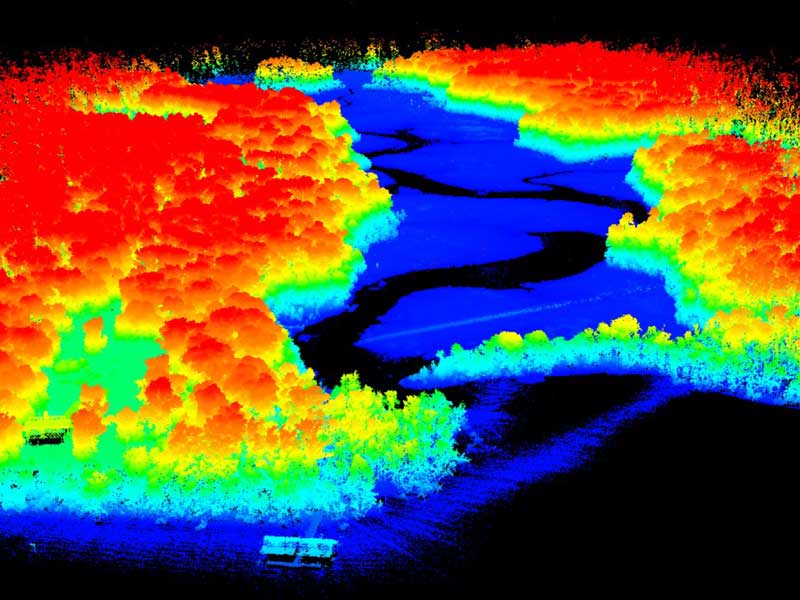Wetlands
Tidal freshwater wetlands: among the most biodiverse of Virginia's ecosystems
Wetlands provide critically important ecosystem services. Located between upland terrestrial habitats and deep-water aquatic habitats, and at the head of coastal estuaries, tidal freshwater wetlands act as:
- nature's kidneys for their ability to clean surface and groundwater
- nature's supermarkets for the role they play in supporting terrestrial and aquatic food webs
- nature's bird bath, attracting an abundance of bird species that use these ecosystems for protection, food and breeding habitat
- nature's speed bumps, protecting coastal regions from Nor'easters and hurricanes, as well as mitigating downstream river flooding
- a large role in Earth's climate cycle, storing large quantities of carbon, an providing critical nursery habitat to migratory bird and fish species
Research and Restoration
Kimages Creek Wetland Restoration
A major wetland and stream restoration effort is underway at the VCU Rice Rivers Center. Kimages Creek runs through the heart of the center.


Chesapeake Bay Sentinel Site Cooperative
Rice Rivers Center is a part of ecosystem-based study sites across the Chesapeake Bay to measure the impacts of sea level rise in the Bay and help communities prepare for coastal flooding and other effects of changing climate conditions.


Emerging Technologies
New environmental technologies, like this three-dimensional LiDAR model of Rice Rivers Center, allow for precision monitoring of wetland ecosystems.


Partner Organizations
The restored wetlands and stream are protected in perpetuity under a conservation easement held by The Nature Conservancy. Additional organizations whose partnership helped make the restored wetlands possible include: